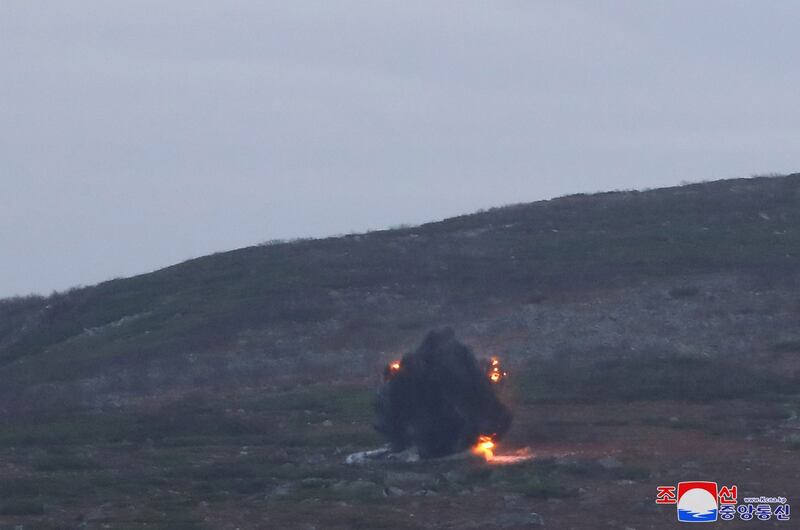Updated on September 19, 2024 at 1:46 p.m. ET
North Korea said on Thursday it had successfully test-fired a new tactical ballistic missile capable of carrying a “super-large” warhead, a day after South Korea’s military said the North launched multiple short-range ballistic missiles.
The new missile, named the Hwasongpo-11-Da-4.5, was tipped with a 4.5-ton super-large conventional warhead in the test-firing conducted on Wednesday by the North's Missile Administration, said North Korea’s state-run Korean Central News Agency, or KCNA.
A super-large warhead is on a list of high-tech weapons that North Korean leader Kim Jong Un had vowed to develop at a party congress in 2021, including a military spy satellite and solid-fuel intercontinental ballistic missiles.

“Its test-fire was aimed at verifying the accuracy of hit at medium range of 320 km and explosive power of the super-large warhead with a missile loaded with such a warhead,” KCNA said, adding that Kim guided the test-fires and expressed great satisfaction.
“The military and political situation in the region threatening the present state security environment indicates that the work for bolstering up the military capability for self-defense should be the most important affair of the country,” said Kim, cited by KCNA.
South Korea’s Joint Chiefs of Staff, or JCS, said the launches had been detected at about 6:50 a.m. on Wednesday from the North’s Kaechon area in South Pyongan Province, north of the capital Pyongyang. The missiles traveled about 400 kilometers (250 miles), the South Korean military said without providing further details.
RELATED STORIES
[ North Korea launches multiple short-range ballistic missiles: SeoulOpens in new window ]
[ North Korea unveils uranium enrichment facility for the first timeOpens in new window ]
[ Kim Jong Un says North Korea to increase its arsenal of nuclear weaponsOpens in new window ]
Several South Korean experts said that more verification is needed to determine if the missiles could indeed carry a super-large warhead.
"It is difficult to measure the weight of the missile based on radar and the missile's appearance alone," said Lee Sung-joon, head of the public relations office of the South Korean Joint Chiefs of Staff. "We need to comprehensively analyze the amount of the explosion and the flight trajectory, and I would like to tell you that the South Korean and U.S. intelligence authorities are analyzing that."
If North Korea's claim that it launched a missile carrying a 4.5-ton warhead is true, there is analysis that it may have been intended to strike key military facilities, such as underground command centers operated by the South Korean and US militaries, and that it may have been intended to respond to the South Korean military's announcement of its military capabilities against the North, Kim Dae-young, a research fellow at the Korea Institute for National Strategy said.
"There is a goal of striking underground facilities, but it is also seen as a response to the Korea Massive Punishment and Retaliation, or KMPR plan announced by the South Korean military," said Kim, referring to an operational plan to incapacitate the North's leadership in a major conflict, which South Korea unveiled in March
In response to the North’s missile launch, South Korea’s presidential office said it “sternly warned” against North Korean provocations, adding it was closely monitoring its behavior and was prepared for a range of possible provocations with a high level of readiness to protect the lives and safety of its citizens.
The missiles fired by North Korea are believed to be a similar variant to the modified version of the SRBM KN-23 series that it launched on July 1, according to a military source.
At the time, North Korea said the two launches were tests of the “new tactical ballistic missile Hwasongpo-11Da-4.5.”
The July test was conducted from the North’s North Hwanghae Province, and it was thought to have been a failure by the South Korean military, with one of the two rockets fired in a northeasterly direction traveling more than 600 kilometers (373 miles), but the other only 120 kilometers (75 miles) – meaning that one of the missiles flew off the coast of Chongjin, while the other crashed near Pyongyang.
North Korea said at that time the test was successful and promised to conduct another test, with a range of about 250 kilometers (155 miles).
Edited by Mike Firn.
Update adds comments from South Korean experts.
